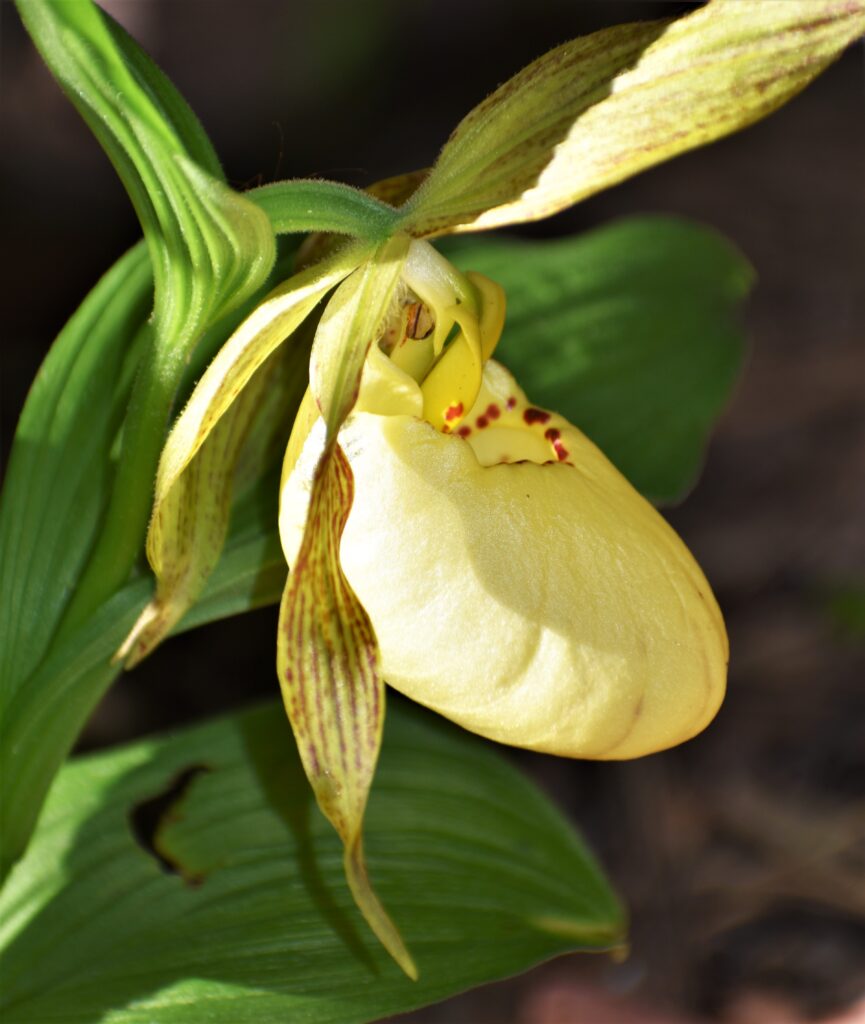C. pubescens x C. fasciolatum
Common Name: slipper orchid, lady’s slipper, moccasin flower, camel’s foot, squirrel foot, steeple cap, Venus’ shoes, whippoorwill shoes, nerve root, American valerian
Scientific Name: Cypripedium spp.Family: Orchidaceae (Orchid)
We were able to grow several Lady’s Slipper plants this year – they are in a hidden magical place on the farm for our future grandkids to enjoy.
This particular plant is striking with a bit of a bigger pouch than others and a creamy yellow color versus the pink of Appalachian fame.
Here is a wonderful folk tale regarding Lady’s Slipper:
“Sometime long before the arrival of European colonists, a young Native American maiden whose tribe was dying of an unknown disease went out in search of medicine to save her people. The winter’s snow was deep and the woman’s bare feet swelled and became frostbit as she frantically searched the wilderness for the herbs that would bring healing.
Sadly, the woman who had hoped to deliver her tribe from certain doom succumbed to her injuries and died all alone in the wilderness.Though she was not successful in completing her mission, the woman’s courage and bravery were honored by a beautiful and new plant springing up from the place she had died: The Lady Slipper flower, also known in older days as “Moccasin Flower”.
A rare and beautiful plant whose flower was in the shape of a young woman’s shoe.This story is an ancient Native American legend and it is believed that the plant only grew in the exact location where the young woman’s feet had trod while she searched for good medicine.”
You may not know this – but, it can take three years from germination until the lady’s slipper seedling even makes its first green appearance above ground. And then another three to five years before its big enough to flower. Once a lady’s slipper is established, it lives for an average of two to three decades, flowering every few years or so. Some authors claim that the plants can live for over a century, and possess the ability to remain subterranean for years, even up to a decade, if conditions are adverse.There are several protected plants being carefully watched that have been measured to be over 50 years old!
One might imagine, with this slow growing lifestyle, that lady’s slippers are not that abundant. And one would be right.
Lady’s slipper root was once a popular medicine, overharvested for its use as a nervine, sedative, relaxant and aphrodisiac.
Although lady’s slipper is no longer harvested for medicine, it faces other threats in the form of habitat loss and poaching. The plants are often dug up and either sold or replanted. Most plants do not take well to transplanting, perishing or languishing, as the fungal/root connection is disturbed.
We know we were quite blessed to have such success!
Lady’s Slipper scientific name is Cypripedium – the species name means stemless, which is somewhat confusing as the flower actually has a stem. But the flower stem is not technically a stem—it’s a flower stalk, which botanists call a scape. The plants enjoy dry or wet acidic woods, under conifers such as pine and hemlock, or in mixed hardwoods.
Its range extends from Newfoundland, west to Alberta, down into northern Alabama and eastern Georgia.
Resources: Chestnut School of Herbs and Appalachian Magazine

